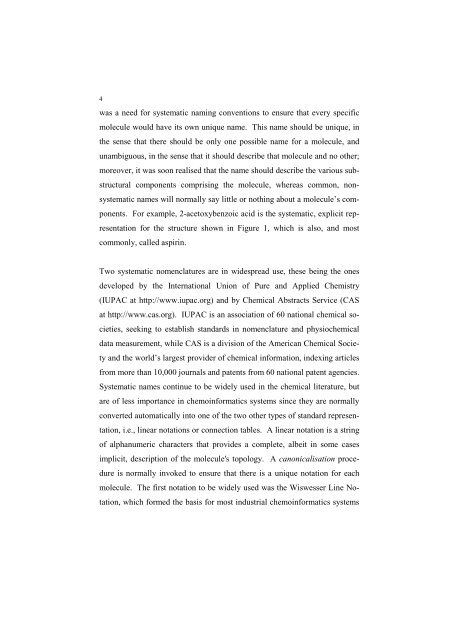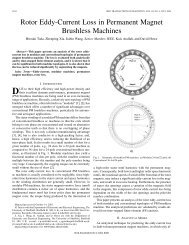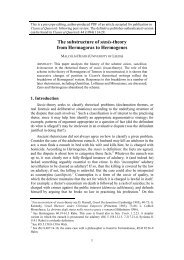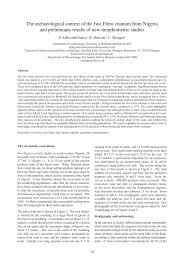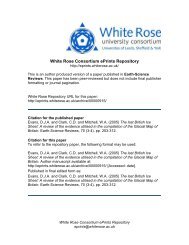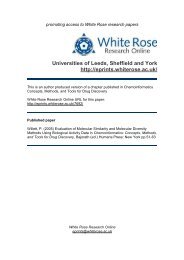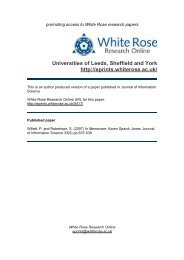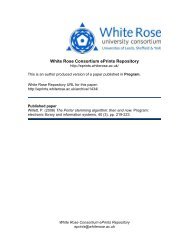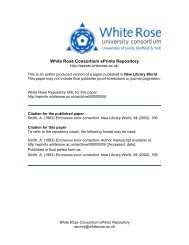Download (312Kb) - White Rose Research Online
Download (312Kb) - White Rose Research Online
Download (312Kb) - White Rose Research Online
You also want an ePaper? Increase the reach of your titles
YUMPU automatically turns print PDFs into web optimized ePapers that Google loves.
4<br />
was a need for systematic naming conventions to ensure that every specific<br />
molecule would have its own unique name. This name should be unique, in<br />
the sense that there should be only one possible name for a molecule, and<br />
unambiguous, in the sense that it should describe that molecule and no other;<br />
moreover, it was soon realised that the name should describe the various substructural<br />
components comprising the molecule, whereas common, nonsystematic<br />
names will normally say little or nothing about a molecule’s components.<br />
For example, 2-acetoxybenzoic acid is the systematic, explicit representation<br />
for the structure shown in Figure 1, which is also, and most<br />
commonly, called aspirin.<br />
Two systematic nomenclatures are in widespread use, these being the ones<br />
developed by the International Union of Pure and Applied Chemistry<br />
(IUPAC at http://www.iupac.org) and by Chemical Abstracts Service (CAS<br />
at http://www.cas.org). IUPAC is an association of 60 national chemical societies,<br />
seeking to establish standards in nomenclature and physiochemical<br />
data measurement, while CAS is a division of the American Chemical Society<br />
and the world’s largest provider of chemical information, indexing articles<br />
from more than 10,000 journals and patents from 60 national patent agencies.<br />
Systematic names continue to be widely used in the chemical literature, but<br />
are of less importance in chemoinformatics systems since they are normally<br />
converted automatically into one of the two other types of standard representation,<br />
i.e., linear notations or connection tables. A linear notation is a string<br />
of alphanumeric characters that provides a complete, albeit in some cases<br />
implicit, description of the molecule's topology. A canonicalisation procedure<br />
is normally invoked to ensure that there is a unique notation for each<br />
molecule. The first notation to be widely used was the Wiswesser Line Notation,<br />
which formed the basis for most industrial chemoinformatics systems


